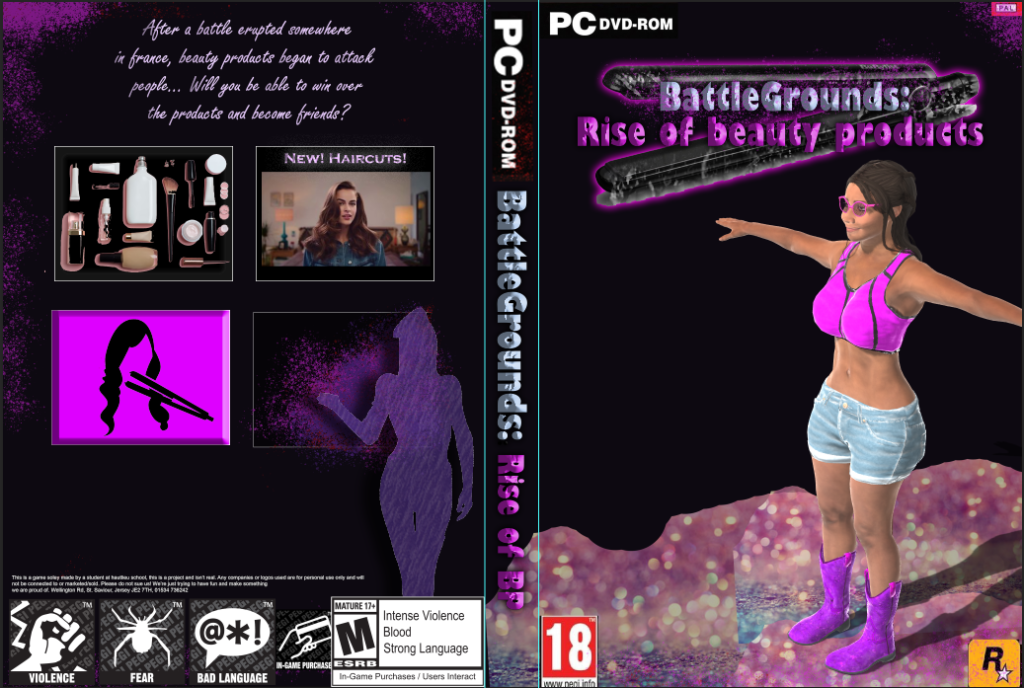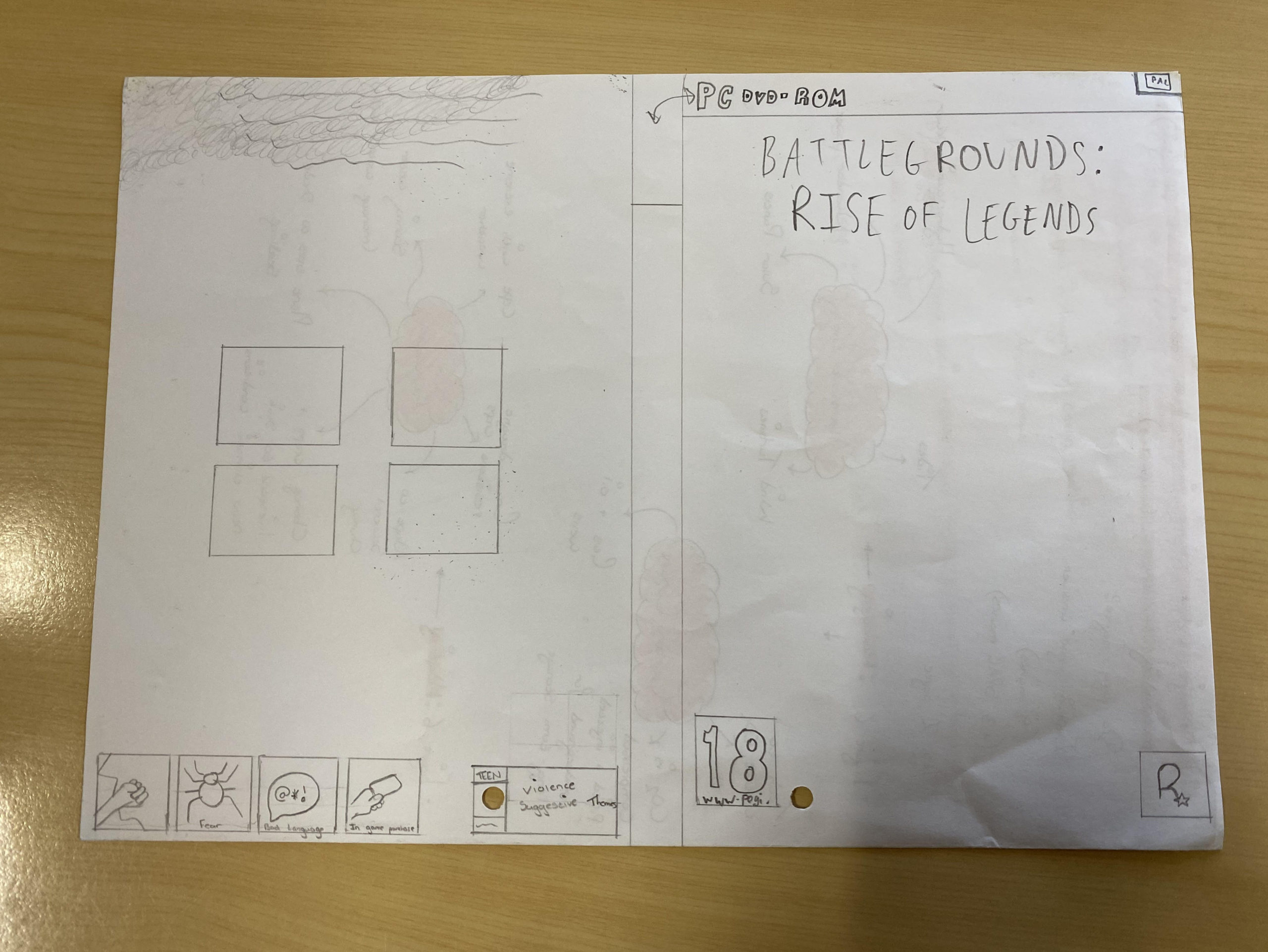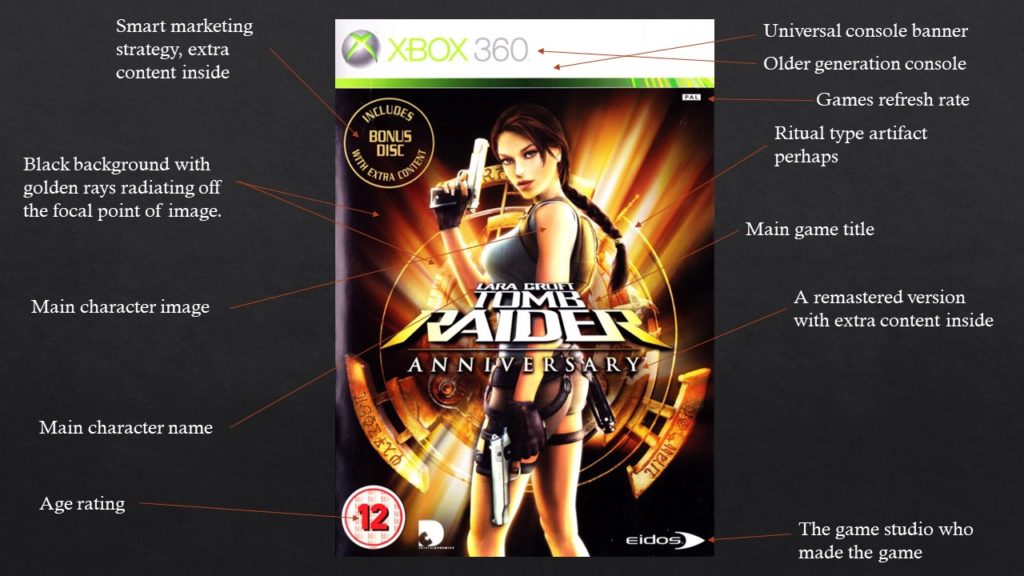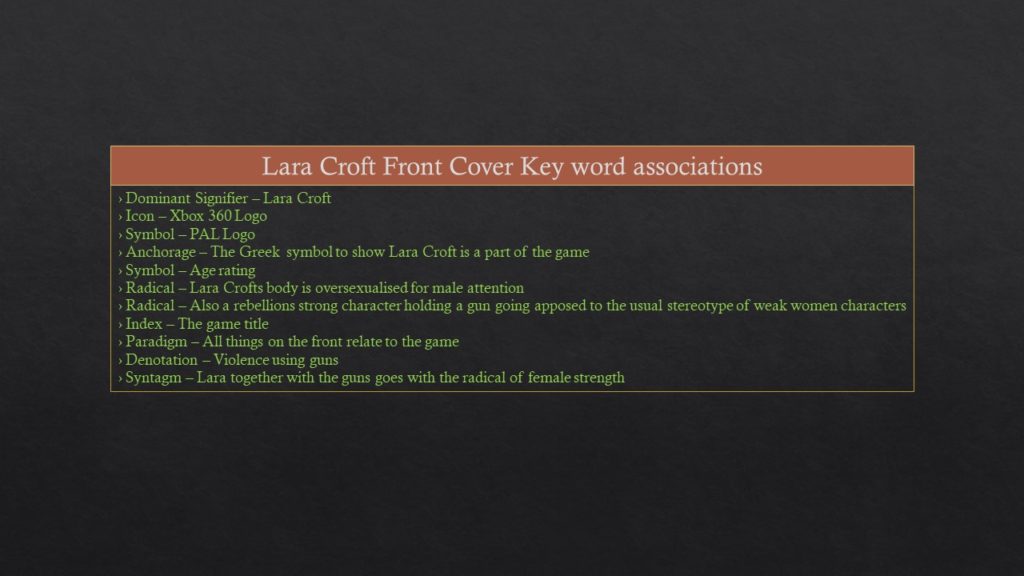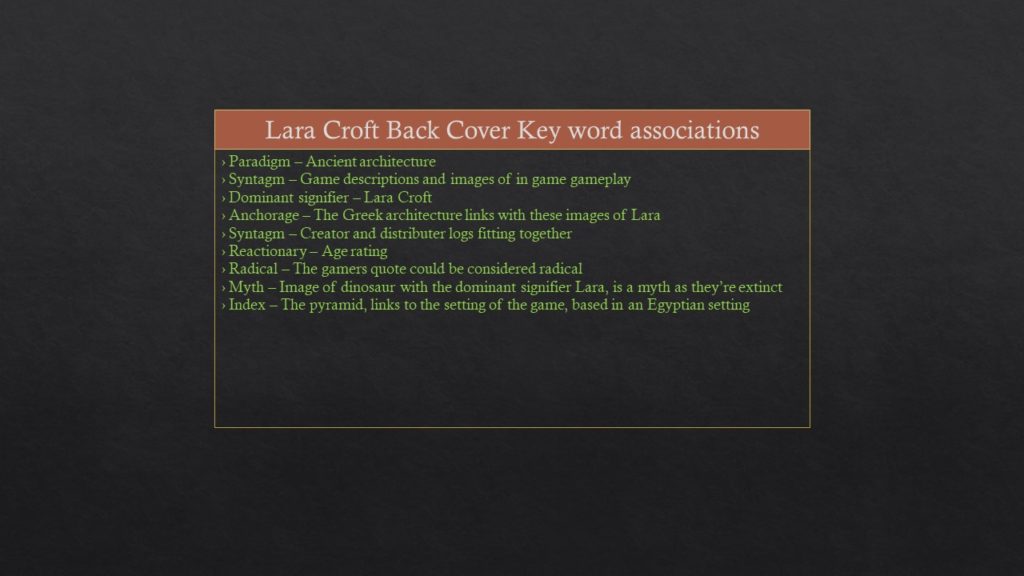ANALYSE THE RELATIONSHIP BETWEEN SIGNIFIERS AND SIGNIFIEDS IN THE TWO CSP GAMES COVERS:
This essay is a semiotic analysis of both the Tomb Raider and Metroid video game covers. I will cover all semiotic language as well as various different media theorists and begin to follow ideas on representation of gender, diversity and the sexualisation of characters in game as well as discussing our patriarchal society and how it is portrayed in our video games. I believe and will argue that depending on gender as well as other factors, it generates a relationship between signifiers that creates a distinct intention and subtle foreshadow to marketing strategies and radical ideologies of women and their representation.
To explain this, when women are used in video game covers, they are usually used in a sexual way that is presumed to be used as a marketing strategy to generate more sales, specifically since that the target market, and the majority of players for video games are males, from pre-teen to adult. In other words, “The presumed straight male” stated by the Feminist Frequency site. Not only this, there is a large stigma regarding women and their capabilities, for example, when we take a look at the Metroid game cover, the dominant signifier is a female fictional character that is represented as strong and powerful, whereas when we look at the game cover of Tomb Raider, we see a female character with little clothing with sexual assets enlarged beyond normality to appeal to voyeuristic attitudes and visions. Although Lara Croft is clearly sexualised there is now a slightly instilled connotation of power in the sense that she is now a symbolic sign of radicalism as she is the main signifier of her own game, and shows some slight progression in generalised view’s of women represented in video games.
Moreover, Metroid is an even clearer sense of this radicalism as she doesn’t show any assets to be enlarged or taken advantage of for marketing, there seems to be less selective representation of her character. However, when Samus (Metroid main signifier) is out of her suit, she is massively over sexualised with a skin tight suit and this constructed reality of voyeuristic ideas being appealed to for the straight male market once more. From this, we see clearly that maybe social structures and dominant ideologies haven’t changed after all. It seems as though we cannot have a female character in video games unless it contains a collective identity across these games where these characters are being sexualised massively. It doesn’t matter if the sexualisation is subtle or obvious, if we want equality for all ethnicity, religion, race, gender as well as other ideas and views we need to create a hegemony where everyone is being fairly interpreted.
I mentioned that the Metroid character is fictional, this is obviously correct, but it still holds a higher connotation and meaning, we constantly see in media that males are held in a higher formality where they are seen to be strong, independent and have an obligation to take care of women. Like mentioned in the feminist frequency website, there is a common use of the “damsel in distress” theme where the female is almost used as an object, just a prize to be won at the end of the game, like commonly seen in the Mario Brothers’ games. This is relevant as although the character is female, its identity is hidden and doesn’t show any signal of feminine characteristics and is almost represented as a male type of character, moreover, to explain this, for a female to be used in video games and their covers, for them to be an appealing strong character for male players, her femininity needs to be hidden and the character needs to be shown as this overly-powerful character. The issue with this is it creates no individuality and doesn’t appose the current social attitudes and structures, it doesn’t create a conversation on how all genders, race and beliefs should be involved in games – making it all the same isn’t the solution.
In conclusion, there is a common misrepresentation of females in video games, but there is also more than that, race and religions all being misused or not being involved at all. But to serve my main point, this use and abuse of the male gaze theory, theorized by Laura Mulvey, clearly shows the minds of the game creators hasn’t changed in recent times and the marketing strategies target voyeuristic attitudes to increase sales.

